- Home
- Spring 2022

Associate Professor of Radiology Greetings AAWR members, We have not just made it through the cold winter but we have thrived. I am referring to our many early 2022 accomplishments. We are now over 1,000 strong! We have 1,030 members as of early March. I would like to say thanks to Stephanie Hige, AAWR’s Executive Director, who is managing a newly expanded family as well as managing the growing family of AAWR. Financially speaking we are prospering. We have many new active members. We have had some generous corporate sponsors for our winter events, and our job postings have allowed us to have a positive balance for the past year. I think we are heading out of the pandemic toward more opportunities to gather. When we ask ourselves what the benefits are of AAWR membership, one of the answers is the camaraderie of members. Another is the positive impact that comes from our virtual and in person contacts with others. For example, there were many words of wisdom shared in our last Bracco-sponsored webinar. And speaking of wisdom, I am very excited about the upcoming GE-sponsored, “Power of the Pack /Sisterhood in the Workplace,” event featuring Dr. Geraldine McGinty. We hope to take away some ideas of how to reach out to other women to pull them up the ladder of success along with us. I am giving a lot of thought to the value derived from being a member of AAWR. With one thousand members, we should be able to come up with some great and implementable ideas. I welcome all of them. |
Catherine J. Everett, MD, MBA, FACR Happy Spring! A groundbreaking resolution is headed to the ACR Annual Council meeting April 24-26, “Paid family/medical leave in radiology, interventional radiology and radiation oncology.” Named as Resolution 13, it was written by AAWR leader and former president, Elizabeth Arleo MD, FACR. Sponsorship includes multiple other AAWR leaders who are also Councilors of the ACR, the ACR Board of Chancellors, the Council Steering Committee, and more than a dozen state chapters. The resolution states that radiology practices and training programs STRIVE to provide 12 weeks paid family/medical leave in a 12-month period to its attending and resident radiologists, as needed. There are many hurdles to be jumped to achieve this aspiration. Fairness to all radiologists, fiduciary concerns of groups, recruitment and retention issues in underserved areas are all to be considered. But we, as supporters of humans, should direct our efforts at finding feasible solutions to meet this goal. Put your thinking caps on. Join your AAWR colleagues as voices of change. Most of all, support the AAWR as a strong advocate of all women in radiology. Catherine J. Everett MD, MBA, FACR Secretary, AAWR |
The American Association for Women in Radiology is now accepting nominations for the 2022 Class of AAWR Fellows! These most accomplished members must meet the rigorous AAWR Fellow criteria. The Fellow ceremony is an opportunity for the AAWR to recognize these members for their hard work, dedication, and support they have given to the organization over the years. Fellows can proudly add "FAAWR" to their credentials. All materials must be received by end of business on Tuesday, May 17, 2022. Nominations received after that date will not be considered. We look forward to inducting our fifth Fellow class at the 2022 Business Meeting! If you have any questions or require additional information, please contact AAWR at AAWR@acr.org | The ACR Council considered 51 and adopted 49 resolutions. I’m thrilled to share the passing vote on Resolution 13, which recommends that diagnostic radiology, interventional radiology, radiation oncology, medical physics, and nuclear medicine practices and departments strive to provide 12 weeks of paid family/medical leave in a 12-month period for their attending physicians, medical physicists and members-in-training. The Report of Final Council Action and information on other Council activity is available on acr.org (login required) |
Katarzyna J. Macura, MD, PhD, FACR, FSABI, FAAWR, is a Professor of radiology, urology, and oncology in the School of Medicine of the Johns Hopkins University Institute for Clinical and Translational Research. She served as President of the Maryland Radiological Society from 2013 to 2015 and on the ACR Board of Chancellors, culminating in her term as Vice President of the ACR from 2019 to 2020. Dr. Macura has been involved in advocacy and program-building to support the career development of women in radiology for more than 25 years. She served as President of the American Association for Women in Radiology (AAWR) in 2005, promoting opportunities for the professional empowerment of women radiologists by providing education, networking, and mentorship. During her term, the AAWR received the 2005 Association of American Medical Colleges Women in Medicine Leadership Development Award. The AAWR granted its highest honor, the Marie Sklodowska-Curie Award, to Dr. Macura in 2016. Dr. Macura served as the inaugural Chair of the ACR Commission for Women and Diversity from 2013 to 2019 and oversaw the foundational work of the Commission, which is summarized in the 2019 Diversity Report. Under Dr. Macura's leadership, the Commission undertook initiatives in five major domains: advocacy, visibility, mentoring, education, and research. Dr. Macura has twice been recognized with the RSNA Honored Educator Award. She is a Fellow of the ACR, the Society for Advanced Body Imaging (SABI), and the AAWR. She has to her credit more than 150 publications and more than 200 national and international presentations. |
In 2021, the AAWR partnered with the American Society of Functional Neuroradiology (ASFNR) to create a new joint award. This award aims to increase the number of women in radiology engaged in the field of functional neuroradiology and was named the ASFNR-AAWR “Carolyn C. Meltzer” Joint Award. The award was named for Carolyn C. Meltzer, MD, FACR, Dean of the Keck School of Medicine of the University of Southern California (USC). Dr. Meltzer is also the 2021 AAWR Marie Sklodowska-Curie Award winner and a dedicated member of the AAWR. The ASFNR-AAWR “Carolyn C. Meltzer” Joint Award offers one scholarship every other year for the awardee to attend two consecutive ASFNR Annual Meetings: one when the scholarship is awarded and the other the following year. The Award is open both to faculty and trainees, and ASNFR and/or AAWR membership are encouraged, but not a requirement. The scholarship consists of a cash award to cover travel and hotel accommodations for the ASFNR Annual Meeting, as well as to defray the project costs. The awardee will also receive free registration for two ASFNR Annual Meetings and a free ASFNR membership for two years. Thirty applicants responded to the inaugural call for applications and two recipients were jointly chosen by a joint ASFNR and AAWR award committee for the first year. The winners of the inaugural 2021 ASFNR-AAWR “Carolyn C. Meltzer” Joint Award are Zabecca Brinson, MD, MPH, Diagnostic Radiology Resident at University of Texas Southwestern, and Megan Lipford, PhD, Imaging Physicist at Wake Forest. Congratulations! |
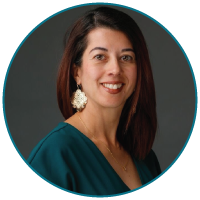 Nikdokht (Niky) Farid, MD
Nikdokht (Niky) Farid, MD
Professor of Radiology, Division of Neuroradiology
Director, Medical Student Education in Radiology
Director, MRI Fellowship
UC San Diego Health
When I first heard about the AAWR, I remember thinking to myself, “Why is this the first time I am hearing about this society?” I was already starting my seventh year as a faculty member in the Department of Radiology at the University of California, San Diego. Curious as to whether there was a society dedicated to women in radiology, I asked a fellow female neuroradiologist one day while having lunch at the annual ASNR meeting and she told me about the AAWR. That evening, I went on the AAWR website and read up on the society. I was thrilled that there was a society dedicated to promoting opportunities, networking, and mentorship for women in radiology and radiation oncology. I became a member that same night.
My connection to the society was strengthened later that year when I had the opportunity to attend the AAWR Luncheon at RSNA. I had the privilege of meeting current and past leaders who were excited to hear about my interest in becoming more involved in the society. Thereafter, I was given a role on the Communications Committee, which led to a wonderful opportunity to update the Pocket Mentor. Working with a group of exceptional women, ably led by Dr. Mai-Lan Ho, we created a document that contains numerous pearls of wisdom and guidance for women at all levels of training and all stages of career. I was fortunate to write the section on work-life integration, a topic near and dear to my heart.
At this point, although I was happy to have discovered AAWR for my own sake, I realized that my next step would be to make this society accessible to every single woman faculty and trainee in my department. I consulted with my chair and others in my department, and the idea of an AAWR Chapter emerged. I reached out to AAWR past-president Dr. Kristen Porter who was incredibly supportive and encouraging and connected me with Dr. Denise Collins, the chair of the Chapter Committee. Dr. Collins shared her experience starting the very first AAWR Chapter in Michigan in collaboration with the Michigan Radiologic Society, and she was extremely kind and generous in her support and guidance. It was during this conversation that I had an “aha” moment: why not create a UC-wide AAWR Chapter that would encompass all five UC Radiology Departments (UC San Diego, UC Irvine, UC Los Angeles, UC Davis, and UC San Francisco), rather than limiting the chapter to just one institution? Dr. Collins was intrigued by the idea, and we discussed the benefits of her building experience with a statewide AAWR chapter in Michigan, while I started building experience with an academic network chapter in California.
Soon after, I reached out to other female faculty in my own department and at the other four UCs to gauge interest. I was overwhelmed by the positive responses and enthusiasm of my female colleagues to form this chapter. With one to three representatives from each of the five UC Radiology Departments, our chapter met for the first time in early December 2021. Our initial meeting was a space to connect, consult, and determine the vision and goals of our chapter. Fast forward to March 8th, 2022, International Women’s Day, our UC-wide AAWR Chapter had its inaugural event, which was held virtually with keynote address by Dr. Kristin Porter, followed by talks given by phenomenal female leaders from each of the five UC Radiology Departments - Dr. Christine Chung (UCSD), Dr. Nadine Abi-Jaoudeh (UCI), Dr. Kathleen Brown (UCLA), Dr. Elizabeth Morris (UCD), and Dr. Christine Glastonbury (UCSF). The event was a huge success with more than 100 participants including faculty, fellows, residents, and medical students. The feedback was incredibly positive, with everyone expressing gratitude for having an opportunity to hear superb talks on issues of relevance to women in radiology.
Our chapter is just getting started, but what this experience has shown me thus far is that women in radiology want to come together - to teach, support, mentor, recognize, and celebrate one another! The AAWR is the mother ship, but we need more chapters in every city and state so that the benefits of this society can be diffused to every single institution and to every single individual who desires this support and mentorship. Who’s next??

Elainea Smith, MD
Clinical Instructor, Abdominal Imaging Section
University of Alabama - Birmingham
On March 16, 2022, AAWR and GE Healthcare Women’s Network presented a webinar as part of the Women’s Wednesday Learning Series. The webinar was titled “Power of the Pack: Sisterhood in the Workplace.” This discussion featured Geraldine McGinty, MD, MBA, FACR, Senior Associate Dean for Clinical Affairs and Associate Professor of Clinical Radiology at Weill Cornell Medicine, as well as Heather Chalmers, President & CEO of GE Canada. It was moderated by Kaamilya Clinkscales-Major, head of Inclusion, Diversity, and HR Compliance for GE Healthcare.
Dr. McGinty and Chalmers discussed how to avoid the Queen Bee phenomenon in a panel Q&A format, offering powerful strategies to empower and lift each other up within the workplace. The discussion began with the many reasons this topic is necessary. For example, Clinkscales-Major reported that women are reporting higher rates of burnout post pandemic: one in three women have considered leaving the workplace or downshifting their careers, up from one in four before the pandemic. Therefore, the need for support of women in the workplace is especially important at this time.
A set of pre-submitted questions was presented to both Dr. McGinty and Chalmers regarding their roles in leadership. The questions included how they were treated differently during their careers because they were women, how to change the dynamic where women are less often encouraged to seek higher leadership positions, and more. The hour also provided insightful questions for the panelists from the audience as well.
This recorded webinar is available on the AAWR webinar archives, as is the Fireside Chat from April 6 featuring Mary C. Mahoney, MD, FACR, FSBI, led by Jean M. Kunjummen, DO.
Dr. Marie Curie Leads the Way This article was written by Claudia F.E. Kirsch MD, FASFNR. Professor of Neuroradiology and Otolaryngology, Madame Marie Sklodowska-Curie was born in Warsaw, at that time part of the Russian empire, now part of Poland, on November 7, 1867 and passed away on July 4, 1934 from aplastic anemia. She exemplifies great women in radiology in so many ways, and I am honored to present her in the first in a series of AAWR Great Women Radiologists.
Marie Curie was buried in a lead coffin because many believed her body would emit harmful toxic levels of radiation. However, her exhumed remains in 1995 performed by the control of the French Office de Protection contre les Rayonnements Ionisants (ORPI) for transfer to the Pantheon in Paris, demonstrated radiation that was only 360 becquerels per cubic meter, with the maximum accepted public exposure 7000, Bq m-3.4 Because radium’s half-life is 1,620 years, and risk occurs with skin absorption or oral ingestion, and her laboratory was filled with it, ORPI concluded that her death was more likely from the x-ray exposure from the portable x-ray machines she created rather than radium.4 In fact, the aplastic anemia that killed her at age 66 was more likely from excessive radiation exposure from portable x-rays on the battlefield in World War I. With her 17-year-old daughter she drove these units to casualty clearing stations on the battlefields so the x-rays could identify fractures, metallic bullets, and shrapnel, saving soldiers’ lives3. She knew radiation in high doses was dangerous, yet her focus was to find a way to bring radiology to the front lines of the battlefield, and while on the battlefield there were limited options to reduce exposure. Perhaps growing up the youngest of five children of poor schoolteachers and her mother dying of tuberculosis when she was young made her resilient. Her father was unable to support her, so she became a governess and read and studied on her own. Her own options, such as becoming a teacher, were limited as there was no money for formal education.4 Her sister in Paris offered her a place to live and she jumped on the opportunity, arriving in Paris in 1891 and diving into the Sorbonne University, reading physics and mathematics. Three years later she met Pierre Curie, and they married a year later. She noticed that uranium and thorium produced the enigmatic x-rays that affected a photographic plate. Henri Becquerel’s work on uncovering radioactivity in 1896 inspired her and her husband Pierre to examine pitch blend, where they discovered it had more radioactivity than uranium, by extracting out polonium and radium. This work won them a joint shared Nobel Prize in 1903.1 It’s hard to imagine and yet true that after winning the Nobel, the Royal Institution in London would only allow Pierre to speak and lecture, as the Institution did not allow women lecturers. Marie Curie didn’t let the sexism, her miscarriage in 1903, her husband’s death from a traffic accident in 1906, or her older sister’s death from typhoid fever prevent her from carrying on her research. In fact, these experiences only increased her compassion for treating those who were suffering.6 In 1911, she received the Nobel Prize in Chemistry for extracting and producing radium as a pure metal.1
Monico-Sanchez Moerno had created a small portable x-ray machine in 1909. The problem was getting the machines to the battle field and charging them with enough electricity to produce the x-ray from the Crook’s tube.6 Madame Curie figured out how to install dynamos in the vehicles, hook up the portable device and charge it, in order to utilize the machines on the frontlines. These “Little Curies” helped millions of soldiers in World War I, and she even drove them onto the battlefield herself. If a vehicle flipped in a ditch, she repaired it. Her portable x-ray units saved countless lives and won the Battle of the Marne for the Allies. In 1920 she founded the Curie Hospital to treat cancer and was one of the first to write early guidelines on X-ray safety. Likely a truly great radiologist, she advocated, innovated, and cared about patients first as well as radiology quality and safety. Her goal, like her name, was always focused on a “cure” for a patient. It is for these many reasons, including her humanitarian spirit, and continued innovation and care for those less fortunate, that I am honored to present her as the first in our series of Great Women Radiologists who led the way. References
|
Associate Professor of Radiology The AAWR Mentorship Corner is intended to stimulate interest in and discussion of advanced topics in leadership and mentorship. Additional society resources for mentorship include the AAWR Pocket Mentor (free to members) and AAWR Mentorship Files at http://tinyurl.com/aawrmentor. Readers are invited to submit mentorship topics and suggestions for future columns. The Art of Medicine: Where Technology Meets Humanity We are in the midst of the fourth Industrial Revolution, in which artificial intelligence, sensor technologies, and interconnection are rapidly transforming the way we live, work, and think. Radiology, being a highly data and technology-driven specialty, is poised to lead these exciting advances in digital and precision health. With the global pandemic further accelerating innovation and collaboration, big tech and automation are penetrating industries and markets worldwide. At the same time, we have witnessed many potential dangers of AI including algorithmic bias, socioeconomic inequality, deepfakes, cyberterrorism, and market volatility. The need for human supervision in the digital world has been emphasized by key thought leaders and is reflected by the value of relationships, communication, and ideation throughout human history. As machines take over the more routine aspects of human work, we have the opportunity to design human-machine partnerships that optimize creativity and maximize social intelligence. In truth, change is the only constant during these uncertain times. A transdisciplinary approach with holistic integration of the physical, biological, and social sciences will help us adapt and proactively shape our future. As individuals, how do we embrace our humanity and contribute to our communities, both professionally and personally? We must each celebrate our uniqueness and diversity, with disparate backgrounds and viewpoints contributing to the collective whole. As a classical violinist for several years, I reflect on how involvement in the arts has influenced my practice as a radiologist and physician. Telling a Story Since radiologists are not front-facing, reports are our primary mode of communication with referring clinicians and patients. Yet radiology reporting is becoming a lost art, amid the ever-increasing case volumes and shift toward structured templates and lexicons. As a specialty, we need to contemplate our communication practices and ensure we are not losing the “shades of grey” that distinguish human interpretation from AI-powered algorithms. I approach reports as expository writing: main idea, prioritized supporting facts, conclusion. Per the opera singer Plácido Domingo, “the high note is not the only thing.” You need to identify the musical line with melody, supporting harmonies, local and global peaks/valleys. When dictating, I try to tie data together logically (Occam’s razor), utilizing a Bayesian approach to account for the relative probabilities of clinical symptoms, labs, and imaging findings. However, one must eschew “satisfaction of search,” as there may be multiple/unexplainable etiologies at play (Hickam’s dictum). A Greater Purpose During the 18th century, philosopher Edmund Burke introduced the concept of the sublime, inspiring an artistic movement that combined the subjective-internal (emotional) and objective-external (natural) worlds. While Enlightened scientists focused on knowledge discovery and rational reasoning, Romantic artists encouraged creativity and imagination. Sublime experiences inspire emotion, reverence, and awe that surpass conventional thought and language. For example, listening to music or viewing a natural wonder can evoke feelings of cosmic consciousness and transcendence. My experiences playing solo, chamber, and orchestral music have taught me a great deal about group dynamics and communication. Good musicians assimilate and integrate data (visual, auditory, kinesthetic) in real time among themselves, their colleagues, the conductor, and the audience. As with any profession, engaging players of diverse backgrounds enriches the group’s depth and breadth of understanding. At its best, the orchestra operates as a unified ecosystem, with multiple interacting parts functioning in perfect synchrony. Conductor Leonard Bernstein once remarked, “I’m not interested in having an orchestra sound like itself. I want it to sound like the composer.” That is, leaders are responsible for looking at the big picture and crafting an overall vision that their followers can understand and appreciate. Once their roles and responsibilities have been clarified, group members can put aside their personal egos and work toward the greater good. The Road to Mastery Centuries ago, access to classical music was reserved for the wealthy and privileged. Today, open-source sheet music and YouTube masterclasses can be downloaded by virtually anyone, anywhere. Child prodigies keep getting younger, though the early focus on technical achievement over true artistry often leads to early burnout and frustration in adulthood. The great cellist Pablo Casals stated that “the most perfect technique is that which is not noticed at all.” In other words, a virtuosic performance may dazzle the audience with its brilliance, but is nevertheless constrained by the player’s capability. Truly masterful technique empowers a player to choose from an infinite range of expressions and exercise artistic restraint, such that the end result becomes solely about the music. Similarly, I have noticed that the best teachers make difficult concepts easy and enjoyable to understand. Having mastered the material, they are readily able to distill down to the essentials and inspire enthusiasm in learners. Based on the infinite mindset, there is no true perfection; therefore all people should strive to become the best versions of themselves. Life is a marathon, not a sprint—have the courage to define your own meaningful personal journey, rather than chasing haphazard goals and societal perceptions. George Leonard’s Mastery explains that experts spend the majority of their time “on the plateau” of intentional practice, which enables continuous and limitless improvement. Human Performance From a classical music concert to a professional medical conference, every live performance is different and unique. As exemplified by television talent competitions, people still prefer emotive renditions with minor mistakes over technically perfect but robotic routines. Know your audience: a dynamic, engaged group can greatly augment the energy and enthusiasm of a performer. On the other hand, listeners who are distracted, disengaged, and/or disruptive can adversely impact everyone’s experience. For medical educators, tailoring the content and style of a lecture with real-time interaction and feedback can help maximize success. It is commonly said that “amateurs practice until they get it right; professionals practice until they can’t get it wrong.” Realizing that there will always be environmental factors outside their control, professionals need to keep pushing their limits, thus ensuring they can reliably deliver in any given moment. Barry Green’s The Inner Game of Music discusses expert approaches to decrease performance anxiety through mental rehearsal, adversity training, minimizing negative self-talk (Self 1), and encouraging open awareness and focus (Self 2). |
The Case for Women in Radiology and Radiation Oncology Click here to read this article featured in Clinical Imaging: Abstract Common misconceptions about radiology and radiation oncology exist and may dissuade women from pursuing these specialties. The American Association for Women in Radiology (AAWR) Medical Student Outreach Subcommittee began a multi-year social media campaign aimed at addressing these myths. Here, we outline several myths presented in this social media campaign and provide a combination of literature review and experts' opinions to deconstruct and dispel them. |
Check out some of the many accomplishments of our talented members that have been shared on #RadTwitter recently!
| The AAWR is pleased to welcome its newest members who joined the Association since April 1, 2022 :
Production Team Co-Chairs, Newsletter Committee Chief Editor Administrative Editor AAWR Executive Director Stephanie Huppert Hige
Contact AAWR |

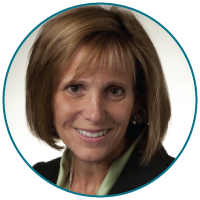
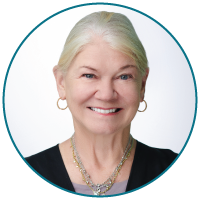
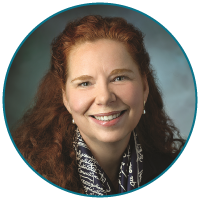 Katarzyna J. Macura, MD, PhD, FACR, FSABI, FAAWR
Katarzyna J. Macura, MD, PhD, FACR, FSABI, FAAWR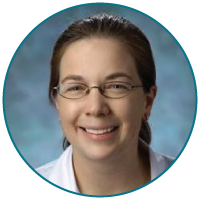 Kristin K. Porter, MD, PhD
Kristin K. Porter, MD, PhD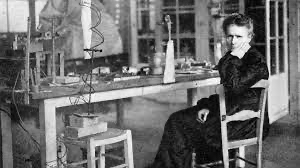 Marie Curie was remarkable, and not just for winning two Nobel Prizes, one in physics in 1903 and in chemistry in 1911, the only person to achieve this distinction.1 What is truly inspiring about Madame Curie is that despite all obstacles, defeat, sickness, loss, sexism, bureaucracies, war, and a horrific pandemic (do these sound familiar to anyone!), her goal was always to create a legacy for humanity and save lives. She was literally the first true medical physicist and built/created the first portable x-rays, “Little Curies,” to save soldiers’ lives on the battlefield, at risk to her own. 1-6 As it so often happens, her true back story is richer, more complex, and remarkable, like the truths of radiation in the metals she uncovered, then in the medals she was awarded.
Marie Curie was remarkable, and not just for winning two Nobel Prizes, one in physics in 1903 and in chemistry in 1911, the only person to achieve this distinction.1 What is truly inspiring about Madame Curie is that despite all obstacles, defeat, sickness, loss, sexism, bureaucracies, war, and a horrific pandemic (do these sound familiar to anyone!), her goal was always to create a legacy for humanity and save lives. She was literally the first true medical physicist and built/created the first portable x-rays, “Little Curies,” to save soldiers’ lives on the battlefield, at risk to her own. 1-6 As it so often happens, her true back story is richer, more complex, and remarkable, like the truths of radiation in the metals she uncovered, then in the medals she was awarded.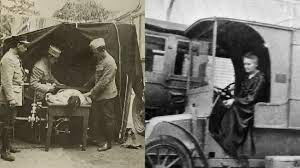 When World War I came around, she wrote to her daughter Irene and said, “You and I, Irene, will try to make ourselves useful!” Realizing that hospitals and battlefields were separated, her focus was on how she could aid the wounded, and she developed the first portable x-rays or “radiologic cars” called “Little Curies” to help wounded soldiers on the battle field.6 In order to obtain money, with excessive male government bureaucracies not helping her, she convinced the Union of Women of France and Red Cross to donate cash to fund her innovative idea for 20 “Little Curies” and train 150 volunteers.6 This involved her having to learn x-rays' clinical applications, how a carburetor works, how to change a tire, and teaching herself to drive!2
When World War I came around, she wrote to her daughter Irene and said, “You and I, Irene, will try to make ourselves useful!” Realizing that hospitals and battlefields were separated, her focus was on how she could aid the wounded, and she developed the first portable x-rays or “radiologic cars” called “Little Curies” to help wounded soldiers on the battle field.6 In order to obtain money, with excessive male government bureaucracies not helping her, she convinced the Union of Women of France and Red Cross to donate cash to fund her innovative idea for 20 “Little Curies” and train 150 volunteers.6 This involved her having to learn x-rays' clinical applications, how a carburetor works, how to change a tire, and teaching herself to drive!2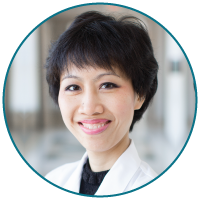 Mai-Lan Ho, MD
Mai-Lan Ho, MD 